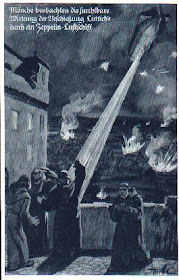Portsmouth Naval War Memorial, Hampshire, UK. Image Source: Commonwealth War Graves Commission.
A common inscription on 20th century war memorials is taken from Ecclesiasticus 44:7:
"All these were honoured in their generations, and were the glory of their times."The quotation, used in this context as opposed to its original biblical chapter, recalls that war is a bloody moment of transformation, which freezes in time because of the sacrifices of its participants. It suggests that war serves, in a terrible way, a social purpose which is poorly understood, and that social purpose, or change, comes at a cost. Rituals around Remembrance Day focus on values, veterans and memories. Behind that, there is the irreducible truth of episodic and savage convulsions in history, which force transformation.













